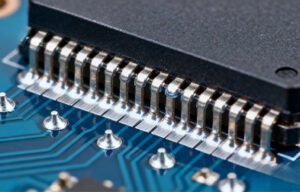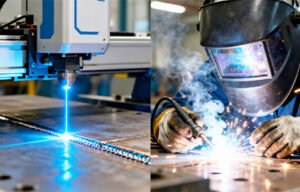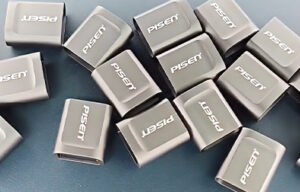How to choose the right laser welding machine for automotive parts
1. Introduction
The automotive industry is evolving rapidly, and precision, speed, and quality are more critical than ever. One of the most impactful innovations in this space is the use of laser welding machines for automotive parts. Whether you’re manufacturing engine components or electric vehicle battery housings, choosing the right laser welder can significantly improve efficiency and product durability.
2. Why Laser Welding Is Essential for Automotive Parts
Laser welding offers a high level of precision, deep penetration, and minimal thermal distortion—making it ideal for the tight tolerances required in automotive manufacturing. Compared to traditional welding methods, automotive laser welding delivers faster processing times, reduced post-processing, and stronger, cleaner welds.
3. Key Factors to Consider When Choosing a Laser Welding Machine
3.1 Material Compatibility
Automotive parts are made from a variety of materials including aluminum, stainless steel, carbon steel, copper, and even composite materials. Not all laser welding machines for automotive parts are equally compatible with these substrates. For example, fiber laser welders are especially effective for reflective materials like aluminum and copper.
3.2 Welding Method and Technique
Your choice should depend on the desired welding technique—such as spot welding, seam welding, or deep penetration welding. For thin-walled automotive parts like battery enclosures or sensors, pulsed fiber laser welding provides controlled heat input and reduces deformation.
3.3 Machine Power and Beam Quality
For thicker materials or high-speed production lines, laser power between 1000W to 3000W is typically ideal. High beam quality also allows for fine, accurate welds, which is crucial in car parts laser welder applications.
3.4 Automation and Integration Capabilities
If your factory utilizes robotic arms or automated production lines, it’s important to select a machine that can be integrated into existing systems. Many industrial laser welding machines now come with interfaces compatible with robots and CNC systems.
3.5 Joint Precision and Repeatability
In automotive manufacturing, consistency is critical. Look for machines that offer stable output, intelligent control systems, and consistent weld joint quality even after prolonged use.
3.6 Cost vs Performance
Consider both initial investment and long-term ROI. While cheaper machines may appear cost-effective upfront, they might lack the durability or precision needed for automotive-grade welding.
4. Types of Laser Welding Machines for Automotive Use
4.1 Fiber Laser Welding Machines
Fiber lasers are currently the most popular choice due to their excellent beam quality, energy efficiency, and ability to weld a wide range of metals. They are especially suitable for high-strength steel and aluminum parts found in car manufacturing.
4.2 Continuous vs Pulsed Lasers
Continuous wave (CW) lasers are preferred for thick parts and long seam welds, while pulsed lasers offer better control for delicate components. Understanding your welding goals helps determine which type is best for your operation.
4.3 Robotic and CNC Integrated Systems
Modern car manufacturing laser machines often combine fiber lasers with robotic systems, offering unparalleled automation, speed, and accuracy. These systems reduce labor costs and improve production efficiency.
5. Case Studies: Laser Welding in Automotive Applications
5.1 Battery Module Welding
Fiber laser welding is ideal for joining battery tabs and housings due to its minimal heat-affected zone and high-speed precision. It ensures safety and durability for EV batteries.
5.2 Car Door and Window Frame Welding
Laser welding is used to assemble lightweight door panels and window frames, improving vehicle strength without increasing weight.
5.3 Engine Component Repair
Laser welders can restore worn or damaged engine parts, such as valve seats and cylinder heads, with pinpoint accuracy.
5.4 EV Heat Exchanger and Radiator Welding
These components require intricate welds with minimal distortion—perfectly suited for laser technology thanks to its controlled energy delivery.
6. Safety and Compliance Considerations
Ensure the machine complies with CE, FDA, or ISO standards depending on your target markets. Also, consider built-in safety features like enclosed welding heads, fume extractors, and protective shields for operators.
7. Recommended Models for Automotive Laser Welding
When selecting a model, consider machines like:
1000W-3000W fiber laser welding machines for general parts
Pulsed fiber lasers for delicate components
Robotic laser welders for full automation
Platform laser welding systems for batch welding of similar parts
A good supplier will also offer customization to meet your specific needs.
8. Conclusion
Choosing the right laser welding machine for automotive parts requires a clear understanding of your materials, production goals, and integration requirements. Investing in the right equipment can lead to better product quality, faster turnaround times, and lower operational costs.
9. Frequently Asked Questions
Q1: Can one laser welding machine handle multiple car parts?
A: Yes, versatile models with programmable settings can weld various parts like battery housings, frames, and radiators.
Q2: Is fiber laser welding better for EV components?
A: Absolutely. Its high precision and low thermal input make it ideal for sensitive electric vehicle parts.
Q3: What is the lifespan of a fiber laser welder in automotive use?
A: Typically 100,000+ hours with proper maintenance.
Q4: Do I need a robot for laser welding car parts?
A: Not necessarily, but integration with robots significantly improves efficiency and consistency in mass production.
Q5: How does laser welding compare to TIG or MIG welding for car manufacturing?
A: Laser welding offers faster speed, higher precision, and lower heat distortion, especially on thin metals.
111-1024x458.png)


